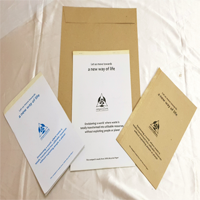You are looking for…
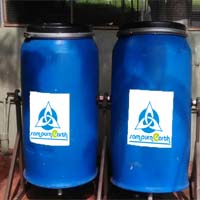
Compost Tumbler
A compost tumbler is a convenient form of a compost pit with wheels to move it around. It consists of two barrel shaped tumblers of varying capacities such as 1, 5, 10 and 25 kg/day. Waste is first dumped in one tumbler for 15 days and in the next one for another 15 days. At the end of the month, the first tumbler can be emptied to collect the compost and the process is repeated. To help circulate air, the tumbler must be manually rotated 15-20 times a day and more air is allowed to seep in through a pipe at the top. It also contains a tap at the bottom to collect compost tea. This method of composting requires little space. It requires some labor to rotate the tumbler and collect the compost once a month. It is odor and pest free and there are no energy costs involved. For those seeking additional convenience, we provide an automatic tumbler system of capacity 25 kg/day which runs on a motor and eliminates the labor required to rotate the tumbler.

Compost Pit
A compost pit is a simple method of turning organic/ wet waste into rich compost. A pit is a rectangular and hollow space that can store on average about 30 to 35 families depending on the dimensions. The walls are made of concrete or mud bricks and perforated to maintain air flow. Insufficient air circulation leads to the release of methane gas which has a foul odour. The waste is cut into pieces and dumped in the pit. However, waste must be regularly shuffled to let the air flow. In addition, materials such as dry leaves or saw dust are added to maintain the carbon-nitrogen ratio. This prevents the emission of another foul-smelling gas called ammonia. Furthermore, addition of a microbial culture helps accelerate the process. This process is economically cheap as it only involves a one-time construction cost and some labor costs. There are no energy costs. If managed appropriately, it is odor and pest free. Operations is simple and does not require a trained workforce.
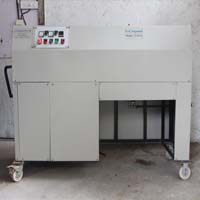
OWC Machine
An OWC system is a sophisticated set-up for efficient production of compost.. Waste is fed into the shredder which breaks down the waste to less than 5 mm size which aids the composting process. . This waste is placed in the OWC machine. Here, bioculum and an absorbent is added as per required. In about 15 minutes, the waste it turned into manure starter. This is then kept in a curing system for a week. The end result is FCO compliant compost which can be used ingardens or can be sold off. This system can manage a wide range and large quantity of waste. It is simple to handle and is time efficient. It is odor and pest free.
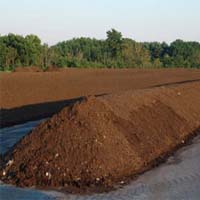
Windrow
Windrow composting is usually used to process extremely large quantities of waste. A windrow means a row. This process involves composting by piling organic matter in long rows. To allow air to circulate and prevent the production of methane, these rows are regularly turned over. The process of turning is done by large machines called turners that straddle the waste pile. A bulking agent is added to maintain a level of pile size and moisture content. This process generates large economies of scale and thus is cost efficient. The compost is produced in large quantities and is usually sold off to farmers. This process is usually done by large municipal corporations.

Biogas Plant
A biogas plant is a large set up that generates energy through waste. The process begins in a mixer where the wet waste is thoroughly mixed and then fed into an aerobic digester. The main process then occurs in the anaerobic (absence of oxygen) digester. In this digester, a combustible gas called methane is released. This gas is collected in a balloon like structure and can be directed to a kitchen to be used as cooking fuel. It can also be converted to electricity. The residue of the process can be used as manure and the water that seeps out can be recycled. Although the construction cost is significant, it is balanced out by the energy that is produced and provides great payback periods. It can process large quantities of waste and is useful for factories, schools, restaurants, hotels or anybody with a large kitchen. This system is reliable since the quantity of waste generated by such organizations is almost the same per day.
We make biogas in 3 types:
• Modular metal fabricated: Ideal for places where space is a constraint. Can be customized according to available space.
• Civil construction based Nisargruna technology. The technology has been develop by Bhabha Atomic Research Centre.
• Large Scale CSTR: This technology is used for very large scale plant I.e. above 20 tonnes per day
Our Biogas plant range starts from 50 kg/day to whatever capacity required.
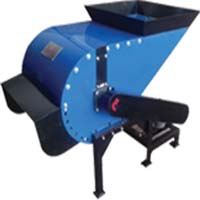
Shredder
.Shredder helps to break down larger waste material into smaller pieces. Reducing the particle size of waste provides large surface area for microbial culture to act upon and reduce the processing time. We provide shredder of different processing capacities ranging from 100 Kg/hr to 500 Kg/hr. It can be used to shred Food waste, Horticulture waste, coconut shells, dry plastic and paper waste, etc.

Waste assessment
We conduct a pilot collection for the first month. The waste provided is judged in terms of composition and quality. Waste containing too much moisture or dirt is rated low.

Valuation
Waste is weighed and assessed on the spot in the presence of an advisor and an authorized person from your end. Waste is expected to be segregated at source. If not, we consider it mixed waste.
We have partnered with e-waste recyclers who are certified by the Maharashtra Pollution Control Board (MPCB) and recycle the e-waste in a strict adherence to the guidelines laid down by the government. The Green Points that you earn for e-waste will be conveyed to you after we assess the waste collected.


